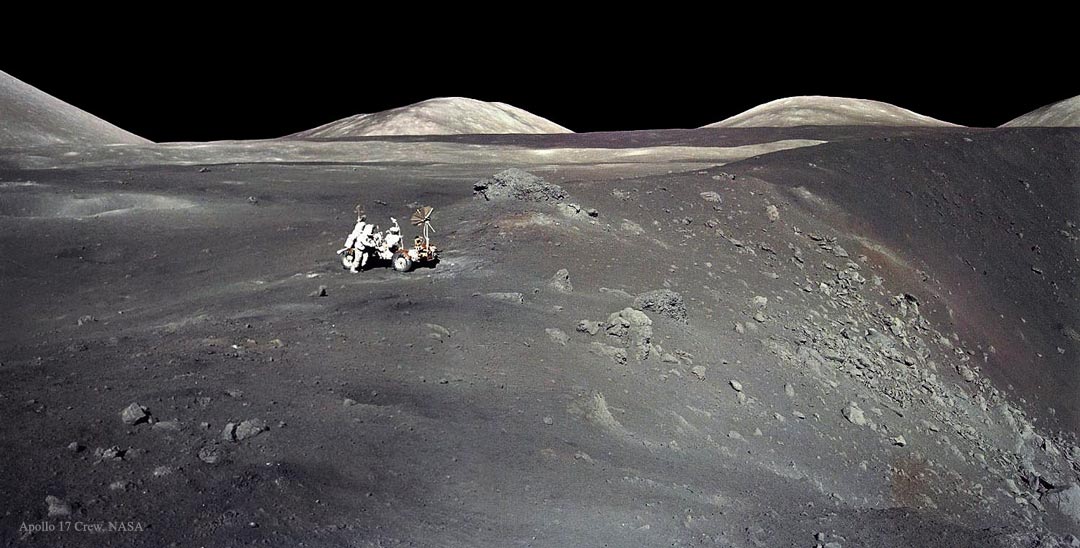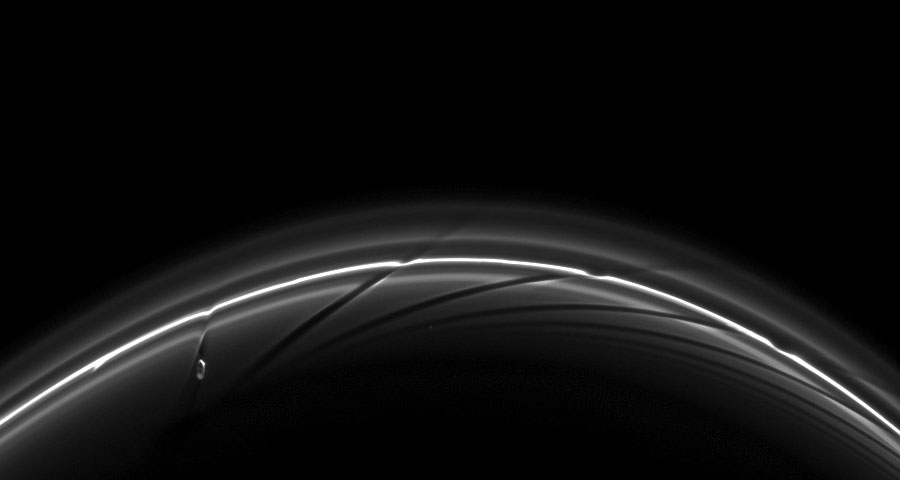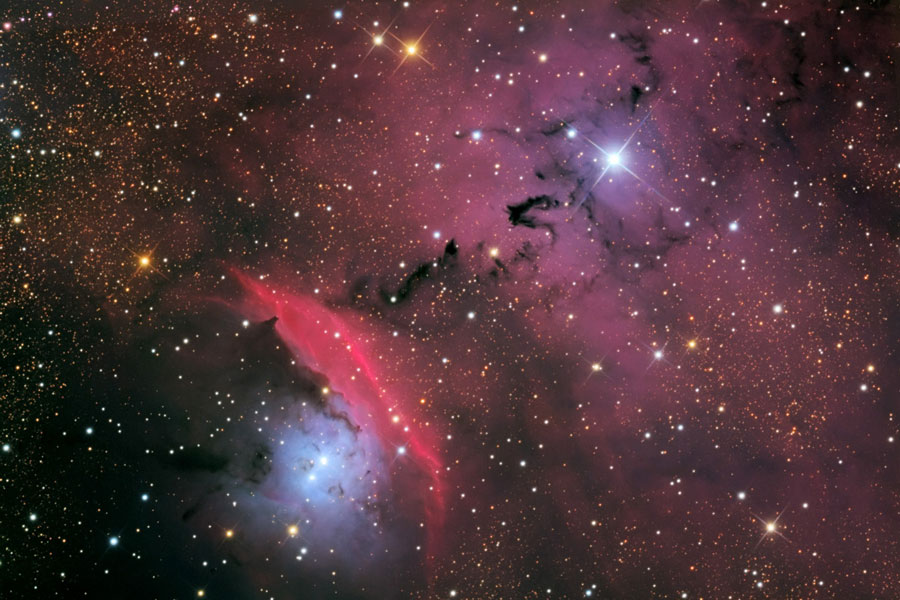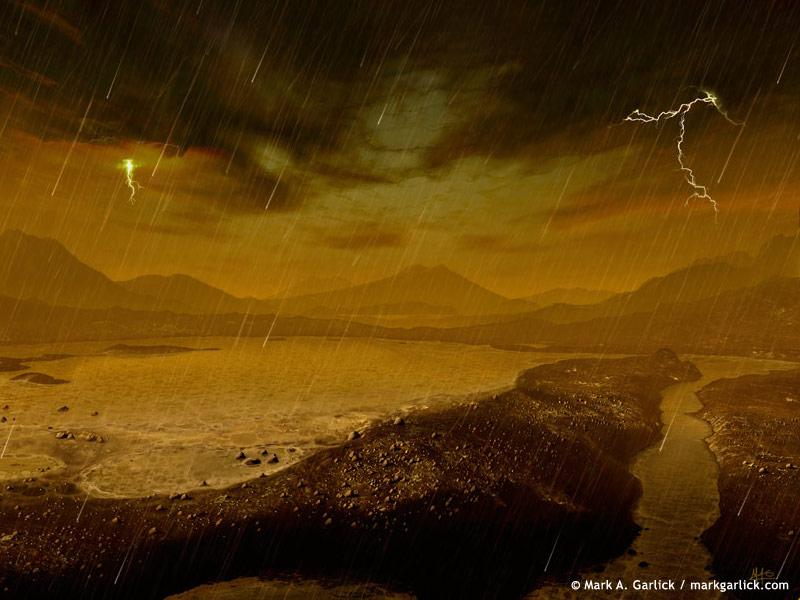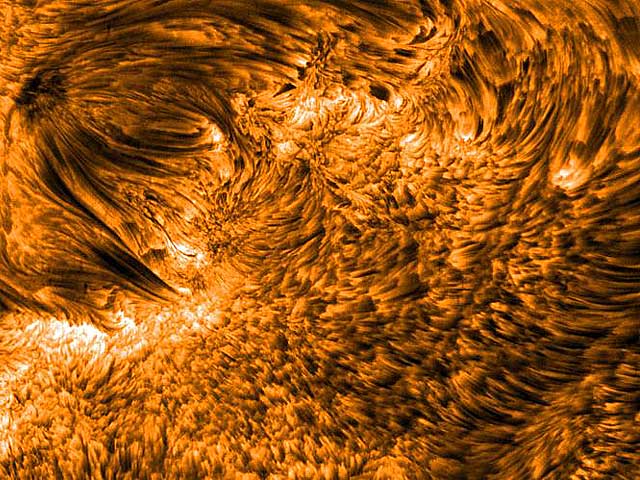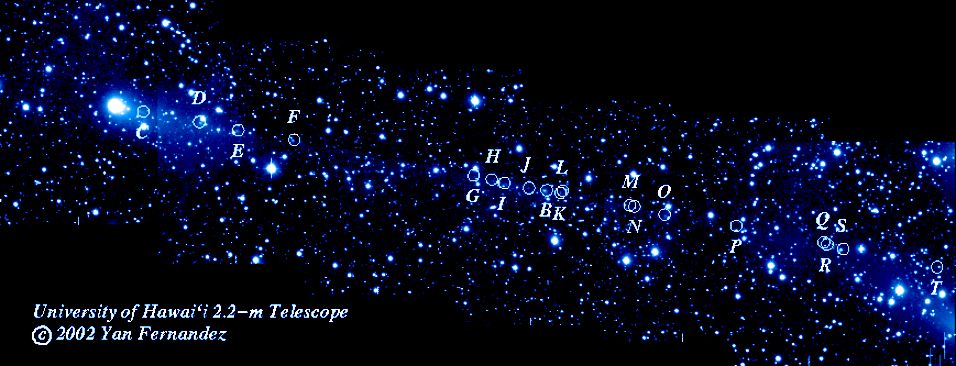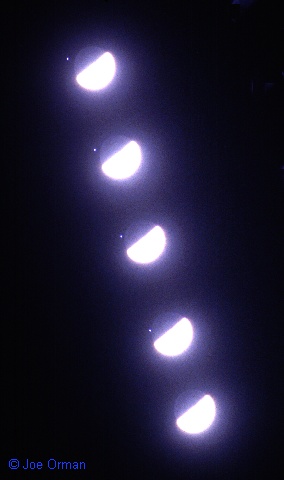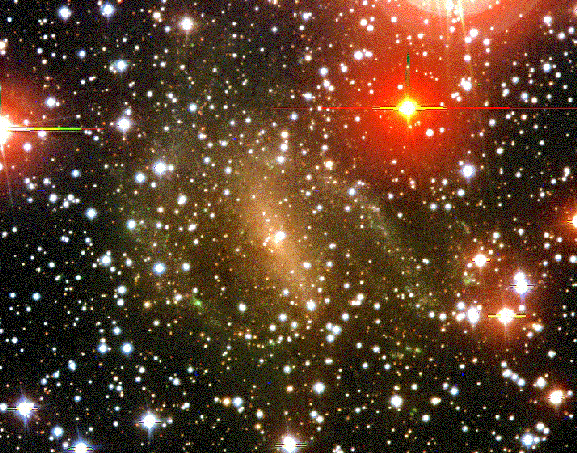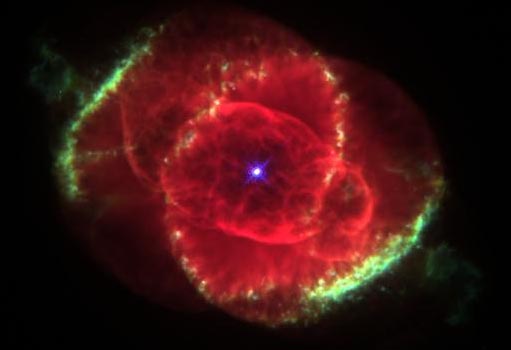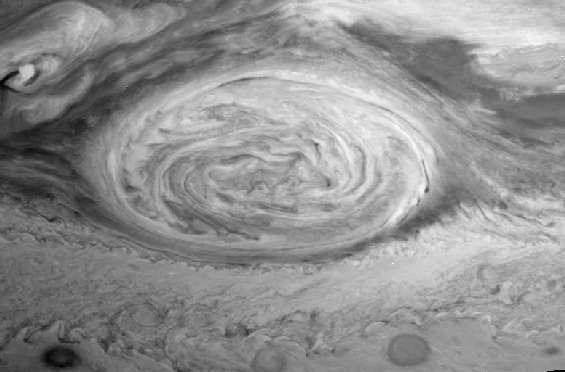| << Previous | Index | Next >> |
2015 On the Moon, it is easy to remember where you parked. In December of 1972, Apollo 17 astronauts Eugene Cernan and Harrison Schmitt spent about 75 hours on the Moon in the Taurus-Littrow valley, while colleague Ronald Evans orbited overhead. This sharp image was taken by Cernan as he and Schmitt roamed the valley floor. The image shows Schmitt on the left with the lunar rover at the edge of Shorty Crater, near the spot where geologist Schmitt discovered orange lunar soil. The Apollo 17 crew returned with 110 kilograms of rock and soil samples, more than was returned from any of the other lunar landing sites. Now forty three years later, Cernan and Schmitt are still the last to walk on the Moon.
2014 These clouds of interstellar dust and gas have blossomed 1,300 light-years away in the fertile star fields of the constellation Cepheus. Sometimes called the Iris Nebula, NGC 7023 is not the only nebula in the sky to evoke the imagery of flowers, though. Still, this deep telescopic view shows off the Iris Nebula's range of colors and symmetries in impressive detail. Within the Iris, dusty nebular material surrounds a hot, young star. The dominant color of the brighter reflection nebula is blue, characteristic of dust grains reflecting starlight. Central filaments of the dusty clouds glow with a faint reddish photoluminesence as some dust grains effectively convert the star's invisible ultraviolet radiation to visible red light. Infrared observations indicate that this nebula may contain complex carbon molecules known as PAHs. The pretty blue petals of the Iris Nebula span about six light-years.
2013 This intriguing monument can be found in Taiwan between the cities of Hualian and Taitong. Split into two sides, it straddles a special circle of latitude on planet Earth, near 23.5 degrees north, known as the Tropic of Cancer. Points along the Tropic of Cancer are the northernmost locations where the Sun can pass directly overhead, an event that occurs once a year during the northern hemisphere's summer solstice. The latitude that defines the Tropic of Cancer corresponds to the tilt of planet Earth's rotation axis with respect to its orbital plane. The name refers to the zodiacal constellation Cancer the Crab. Historically the Sun's position was within Cancer during the northern summer solstice, but because of the precession of Earth's axis, that solstice Sun is currently within the boundaries of Taurus. In this starry night scene the otherwise all white structure is colored by city lights, with its orange side just south of the Tropic of Cancer and the white side just north. Of course, there is a southern hemisphere counterpart of the Tropic of Cancer. It's called the Tropic of Capricorn.
2012 No star dips below the horizon and the Sun never climbs above it in this remarkable image of 24 hour long star trails. Showing all the trails as complete circles, such an image could be achieved only from two places on planet Earth. This example was recorded during the course of May 1, 2012, the digital camera in a heated box on the roof of MAPO, the Martin A. Pomerantz Observatory at the South Pole. Directly overhead in the faint constellation Octans is the projection of Earth's rotational axis, the South Celestial Pole, at the center of all the star trail circles. Not so well placed as Polaris and the North Celestial Pole, the star leaving the small but still relatively bright circle around the South Celestial Pole is Beta Hydri. The inverted umbrella structure on the horizon at the right of the allsky field of view is the ground shield for the SPUD telescope. A shimmering apparition of the aurora australis also visited on this 24 hour night.
2011 Why is the northern half of asteroid Vesta more heavily cratered than the south? No one is yet sure. This unexpected mystery has come to light only in the past few weeks since the robotic Dawn mission became the first spacecraft to orbit the second largest object in the asteroid belt between Mars and Jupiter. The northern half of Vesta, seen on the upper left of the above image, appears to show some of the densest cratering in the Solar System, while the southern half is unexpectedly smooth. Also unknown is the origin of grooves that circle the asteroid nears its equator, particularly visible on this Vesta rotation movie, and the nature of dark streaks that delineate some of Vesta's craters, for example the crater just above the the image center. As Dawn spirals in toward Vesta over the coming months, some answers may emerge, as well as higher resolution and color images. Studying 500-km diameter Vesta is yielding clues about its history and the early years of our Solar System.
2010 What's causing those strange dark streaks in the rings of Saturn? Prometheus. Specifically, an orbital dance involving Saturn's moon Prometheus keeps creating unusual light and dark streamers in the F-Ring of Saturn. Now Prometheus orbits Saturn just inside the thin F-ring, but ventures into its inner edge about every 15 hours. Prometheus' gravity then pulls the closest ring particles toward the 80-km moon. The result is not only a stream of bright ring particles but also a dark ribbon where ring particles used to be. Since Prometheus orbits faster than the ring particles, the icy moon pulls out a new streamer every pass. Above, several streamers or kinks are visible at once. The above photograph was taken in June by the robotic Cassini Spacecraft orbiting Saturn. The oblong moon Prometheus is visible on the far left.
2009 When stars form, pandemonium reigns. A textbook case is the star forming region NGC 6559. Visible above are red glowing emission nebulas of hydrogen, blue reflection nebulas of dust, dark absorption nebulas of dust, and the stars that formed from them. The first massive stars formed from the dense gas will emit energetic light and winds that erode, fragment, and sculpt their birthplace. And then they explode. The resulting morass can be as beautiful as it is complex. After tens of millions of years, the dust boils away, the gas gets swept away, and all that is left is a naked open cluster of stars.
2008 Of course, everyone is concerned about what to wear to a solar eclipse. No need to worry though, nature often conspires to project images of the eclipse so that stylish and appropriate patterns adorn many visible surfaces - including clothing - at just the right time. Most commonly, small gaps between leaves on trees can act as pinhole cameras and generate multiple recognizable images of the eclipse. In Madrid to view the 2005 October 3rd annular eclipse of the Sun, astronomer Philippe Haake met a friend who had another inspiration. The result, a grid of small holes in a kitchen strainer produced this pattern of images on an 'eclipse shirt'. While Yesterday's solar eclipse was total only along a narrow path beginning in northern Canada, extending across the Arctic, and ending in China, a partial eclipse could be seen from much of Europe and Asia.
2007 This bright, beautiful spiral galaxy is Messier 64, sometimes known as the Black Eye Galaxy. M64 lies about 17 million light-years distant in the otherwise well-groomed northern constellation Coma Berenices. The dark clouds along the near-side of M64's central region that give the galaxy its black-eye appearance are enormous obscuring dust clouds associated with star formation, but they are not the galaxy's only peculiar feature. Observations show that M64 is actually composed of two concentric, counter-rotating systems of stars, one in the inner 3,000 light-years and another extending to about 40,000 light-years and rotating in the opposite direction. The dusty black eye and bizarre rotation is likely the result of a merger of two different galaxies.
2006 Might it rain cold methane on Saturn's Titan? Recent analyses of measurements taken by the Huygen's probe that landed on Titan in 2005 January indicate that the atmosphere is actually saturated with methane at a height of about 8 kilometers. Combined with observations of a damp surface and lakes near the poles, some astrobiologists conclude that at least a methane drizzle is common on parts of Titan. Other astrobiologists reported computer models of the clouded moon that indicate that violent methane storms might even occur, complete with flash floods carving channels in the landscape. The later scenario is depicted in the above drawing of Titan. Lightning, as also depicted above, might well exist on Titan but has not been proven. The findings increase speculation that a wet Titanian surface might be hospitable to unusual forms of life.
2005 Last week, crew members of the International Space Station (ISS) watched carefully as the Space Shuttle Discovery did a planned but unusual back flip upon approach. Discovery Commander Eileen Collins guided the shuttle through the flip, which was about 200 meters from the ISS when the above picture was taken. The ISS crew took detailed images of the dark heat shield tiles underneath during a 90-second photo shoot. The images are being analyzed to assess the condition of the dark heat shield. Later the shuttle docked with the space station. On the more usually photographed top side of the Space Shuttle, the above image shows Discovery's cargo bay doors open toward a distant Earth below.
2004 Imagine a pipe as wide as a state and as long as half the Earth. Now imagine that this pipe is filled with hot gas moving 50,000 kilometers per hour. Further imagine that this pipe is not made of metal but a transparent magnetic field. You are envisioning just one of thousands of young spicules on the active Sun. Pictured above is perhaps the highest resolution image yet of these enigmatic solar flux tubes. Spicules dot the above frame of solar active region 10380 that crossed the Sun in June, but are particularly evident as a carpet of dark tubes on the right. Time-sequenced images have recently shown that spicules last about five minutes, starting out as tall tubes of rapidly rising gas but eventually fading as the gas peaks and falls back down to the Sun. These images also indicate, for the first time, that the ultimate cause of spicules is sound-like waves that flow over the Sun's surface but leak into the Sun's atmosphere.
2003 On August 13, 2002, while counting Perseid meteors under dark, early morning Arizona skies, Rick Scott set out to photograph their fleeting but fiery trails. The equipment he used included a telephoto lens and fast color film. After 21 pictures he'd caught only two meteors, but luckily this was one of them. Tracking the sky, his ten minute long exposure shows a field of many stars in our own Milky Way galaxy, most too faint to be seen by the unaided eye. Flashing from lower left to upper right, the bright meteor would have been an easy eyeful though, as friction with Earth's atmosphere vaporized the hurtling grain of cosmic sand, a piece of dust from Comet Swift-Tuttle. Just above and left of center, well beyond the stars of the Milky Way, lies the island universe known as M31 or the Andromeda galaxy. The visible meteor trail begins about 100 kilometers above Earth's surface, one of the closest celestial objects seen in the sky. In contrast, Andromeda, about 2 million light-years away, is the most distant object easily visible to the naked-eye.
2002 Comet 57P has fallen to pieces, at least 19 of them. Orbiting the Sun every 6 years or so this faint comet - also christened Comet 57P/du Toit-Neujmin-Delporte for its three 1941 co-discoverers - is simply 57th on the list of comets known to be periodic, beginning with Comet 1P/Halley. In mid July, responding to reports of a new object possibly associated with Comet 57P, astronomers were able to construct this mosaic of deep sky images identifying a surprising 19 fragments (circled) strung out behind the cometary coma and nucleus itself (far left). The full mosaic spans about a million kilometers at the distance of the comet, while the individual pieces detected are probably a few tens to a few hundred meters across. Stress produced as sunlight warmed the icy, rocky nucleus likely contributed to the fragmentation. In fact, when last seen passing through the inner solar system in 1996, Comet 57P brightened unexpectedly, indicating a sudden increase in surface activity.
2001 This dramatic, garishly colored image was captured with a low-light level camera on 2001 June 7. It shows what appears to be a "burning tree" above the National Cheng Kung University campus in Tainan City, Taiwan ... but the burning tree is actually a fleeting red sprite 300 kilometers away. Red sprites are recently discovered and still poorly understood optical flashes seen dancing at altitudes of 30 to 90 kilometers above thunderstorms. Cousins to lightning bolts, red sprites occur near the edge of the atmosphere and have been glimpsed by astronauts from orbit. What ever their cause, the red sprite flashes usually last only tenths to hundredths of a second and characteristically take on shapes which researchers describe as columns, fingers, trees, or carrots.
2000 The Crescent Nebula is a rapidly expanding shell of gas surrounding a dying star. In this recently released image by the Hubble Space Telescope, a bright dynamic part of the nebula three light-years across is shown in representative color. The Crescent Nebula began to form about 250,000 years ago as central Wolf-Rayet star WR 136 began to shed its outer envelope in a strong stellar wind, expelling the equivalent of our Sun's mass every 10,000 years. This wind has been impacting surrounding interstellar gas, compacting it into a series of complex shells, and lighting it up. The Crescent Nebula, also known as NGC 6888, lies about 4,700 light-years away in the constellation of Cygnus and can only be seen through a telescope. Star WR 136 will probably undergo a supernova explosion sometime in the next million years.
1999 On May 21, viewed from the continental US, a star winked out as it passed behind the dark limb of the first-quarter Moon. The star, Regulus, is hotter than the sun, about 69 light-years distant, and shines in Earth's skies as the brightest star in the constellation Leo, the Lion. The Moon is the brightest object in the night sky and is less than 1.5 light-seconds away. As illustrated in this multiple-exposure photograph, such lunar occultations of bright stars can be majestic to watch. Their exact timing depends on the observer's location but they are not particularly rare occurrences. Astronomers can use lunar occultations to help map the surface of the Moon.
1998 Sometimes you can't see the forest for the trees. But if you look closely at the center of the above photograph, you will see a whole spiral galaxy behind the field of stars. Named Dwingeloo 1, this nearby galaxy was only discovered recently (1994) because much of its light was obscured by dust, gas and bright stars of our own Milky Way Galaxy. In fact, all the individually discernible stars in the above photograph are in our Galaxy. Dwingeloo 1 turned out to be a large galaxy located only five times as distant as the closest major galaxy - M31.
1997 Three thousand light years away, a dying star throws off shells of glowing gas. This image from the Hubble Space Telescope reveals "The Cat's Eye Nebula" to be one of the most complex planetary nebulae known. In fact, the features seen in this image are so complex that astronomers suspect the bright central object may actually be a binary star system. The term planetary nebula, used to describe this general class of objects, is misleading. Although these objects may appear round and planet-like in small telescopes, high resolution images reveal them to be stars surrounded by cocoons of gas blown off in the late stages of stellar evolution.
1996 Imagine a hurricane that lasted for 300 years! Jupiter's Great Red Spot indeed seems to be a giant hurricane-like storm system rotating with the Jovian clouds. Observed in 1655 by Italian-French astronomer Jean-Dominique Cassini it is seen here over 300 years later - still going strong - in a mosaic of recent Galileo spacecraft images. The Great Red Spot is a cold, high pressure area 2-3 times wider than planet Earth. Its outer edge rotates in a counter clockwise direction about once every six days. Jupiter's own rapid rotation period is a brief 10 hours. The Solar System's largest gas giant planet, it is presently well placed for evening viewing. (APOD thanks to Alan Radecki for assembling a preliminary mosaic from the Galileo imagery!)
1995 Astronomers using NASA's Voyager spacecraft to search for a ring system around Jupiter discovered these faint rings in 1979. Unlike Saturn's bright rings which are composed of chunks of rock and ice, Jupiter's rings appear to consist of fine particles of dust. One possibility is that the dust is produced by impacts with Jupiter's inner moons. This false color image has been computer enhanced.
| << Previous | Index | Next >> |
